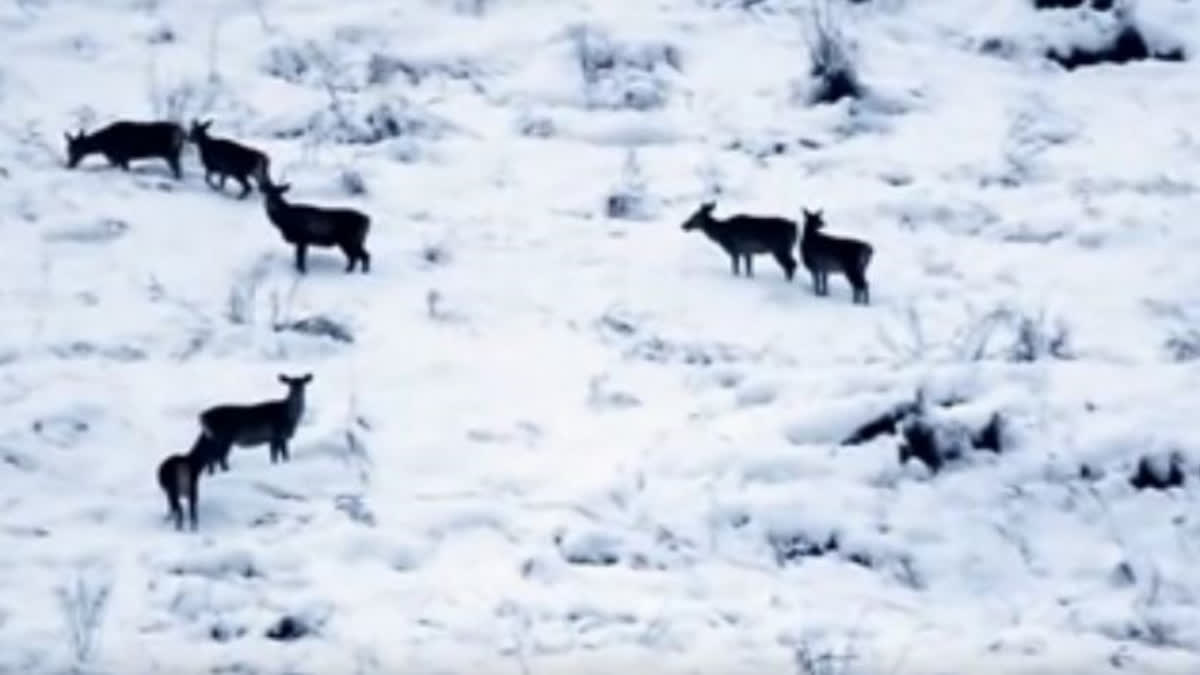Srinagar: The population of the Jammu and Kashmir state animal, the Kashmir stag, also known as Hangul, has increased after two years, much to the pleasure of the wildlife department and wildlife enthusiasts. According to a recent survey conducted by the Wildlife Department and several Non-Govermental Organisations (NGOs), this majestic species needs urgent conservation measures to be protected. It is listed as critically endangered by the International Union for Conservation of Nature (IUCN) Red List and is protected under the Indian Wildlife (Protection) Act of 1972.
The Hangul (Cervus Hanglu), one of the red deers' most widely dispersed species in the east, lives in the temperate coniferous woods of Jammu and Kashmir's western Himalayas. The species' extensive range in the mountains of Kashmir and parts of Himachal Pradesh has been drastically reduced due to habitat fragmentation and related issues. However, a recent survey has made Kashmir's Wildlife Department and Hangul enthusiasts happy.
Since 2004, the Wildlife Institute of India (WII), local research organisations and the Department of Wildlife Protection, Jammu and Kashmir (DWLP) have been actively monitoring the Hangul population in the Dachigam ecosystem. Researchers, field personnel and volunteers have been slavishly studying the population dynamics, migratory patterns and genetic health of the species using scientific techniques like transect surveys, camera trapping and genetic analysis.
There are currently 289 Hanguls in Dachigam National Park, according to a recent population monitoring operation, with an additional 14 have been surfaced in the Shikargarh region. But, several problems still pose a threat to the species' future. The loss of Hangul has been attributed to habitat degradation brought on by excessive livestock grazing, grass cutting, fuel and firewood collecting, as well as human trampling brought on by military personnel and government agencies operating in the area.
The Hangul population is also at risk from ecological elements like low breeding rates, altered viability and diminished genetic heterozygosity. The species' fragility is made worse by predators like the common leopard and Asiatic black bear, which predominantly prey on the fawn.
Also read:Pulwama, purple paradise of Kashmir: Lavender cultivation increases in two years
